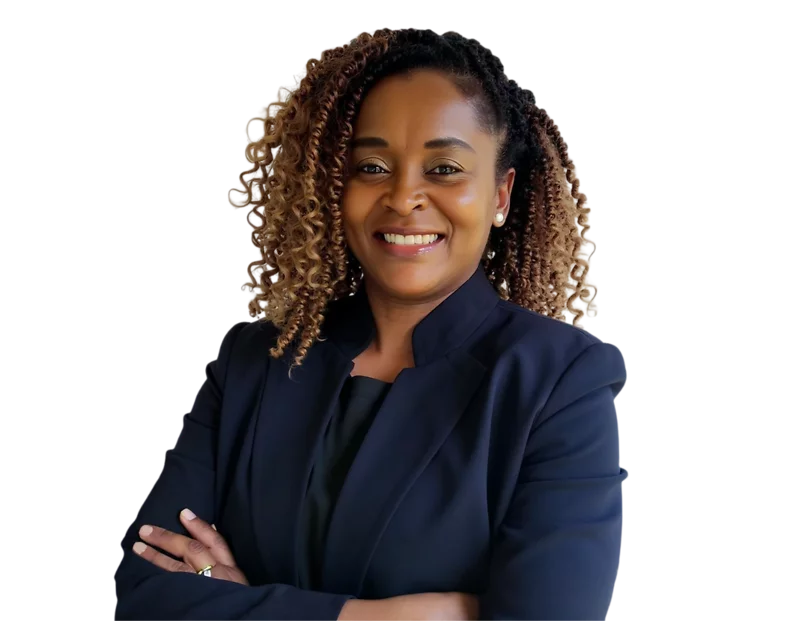Learn from a real employer's mistakes.
Imagine this scenario:
You are advertising for an open position. You get three applicants:
- Applicant 1 meets or exceeds all of your requirements.
- Applicant 2 fails to meet your minimum requirements.
- Applicant 3 meets some of your minimum requirements, but not all.
You interview all three, and what do you do?
Oooooh, Robin, pick me! Pick me! Make an offer to #1!
I said to "imagine" this scenario, but it's a real-life scenario from a real-life lawsuit. Rather than extend an offer to Applicant 1, the employer in this case offered the job to both Applicant 2 and Applicant 3. In other words, it hired two people even though only one position was vacant, and even though Applicant 1 was far more qualified than the others. (Applicant 2 was later moved into a different position for which she was presumably qualified.)

Allow me to include some more details. Applicant 1 was 66 years old and had an injured leg that made it hard for him to walk and required him to stick his bad leg out straight when he was seated. Applicant 2 was 29 years old, and Applicant 3 was 30 years old. Neither 2 nor 3 had any type of disability, as far as I can tell.
Now you may be thinking: Well, maybe this was a very physical job. Nope. It was for a drug/alcohol addiction counselor.
Not surprisingly, Applicant 1 filed a lawsuit alleging disability discrimination and age discrimination. And he lost! A federal judge in Pennsylvania granted summary judgment to the employer.
But this week the U.S. Court of Appeals for the Third Circuit reversed and said that the employer would have to go to trial on Applicant 1's disability and age discrimination claims.
To me, the fascinating part of this case is that the employer ever won summary judgment at all. Here's more of the story:
According to Applicant 1, the day he showed up for his interview (this was in 2019, pre-COVID and pre-interviews by videoconference), the two interviewers stared at his leg the whole time. One gaped (literally, mouth wide open) at him. The interviewers apparently didn't deny this. Instead, they testified that they didn't remember the interview. That's not good.

WHEN HE LIMPED IN -- I MEAN, CAME IN -- FOR AN INTERVIEW.
Applicant 1's resume, of which the employer had a copy, said that he graduated from college in 1973. The interview was in 2019, so assuming he was 22 when he graduated from college, he would have been 68 at the time of the interview. (Since he was only 66, maybe he graduated from college early, which would make him super-smart and even more qualified, wouldn't it?) In any event, that graduation date was a very good tip-off that he was no spring chicken. There were also indications from both court decisions that Applicant 1 looked more or less his age. No Dick Clark, apparently. But the interviewers were both in the protected age group, so it's all good, right?
As far as the disability was concerned, Applicant 1 had to struggle to get up the stairs to the interview room (with one of the interviewers watching), and had to keep his bad leg straight out in front of him while he was sitting for the interview.
Aaaaand, when the position was filled with the two less-qualified candidates, the company sent Applicant 1 a rejection letter saying that the position had "been filled." Which was true. Times two. But when defending the discrimination charge that Applicant 1 filed, the company's in-house counsel told an investigator with the U.S. Equal Employment Opportunity Commission in writing that the position was never filled.
Because of the Third Circuit opinion, this employer will have to go to trial on Applicant 1's discriminatory failure to hire claims. He's suing under the federal Americans with Disabilities Act and Age Discrimination in Employment Act, as well as their equivalents under Pennsylvania state law.
Of course, it is possible that the employer will win at trial. The interviewers testified that the two young women did really well in their interviews and were current employees, and that one of them (I believe this was the one who did not meet the minimum requirements) was bilingual. On the other hand, they said Applicant 1 did not have a good interview. I didn't see anything in the court decisions explaining exactly why they thought his interview was bad.
Probably because he was a Boomer with a bad leg.
Kidding! Kidding!
Which brings me to the real subject of this post:
The Five Lessons in Hiring that you've been waiting for all your life

No. 1: Don't discriminate.
No. 2: Being "in the protected age group" won't shield you from a charge of age discrimination. First off, under federal law, the protected age group starts at 40 and never ends, and there is a huge difference between the discrimination faced by a 40-year-old versus that faced by a 65-year-old. Second, it is not unheard of for older employees to hold stereotypical views of age and to discriminate against other, older employees or applicants. Even "older" people who are younger than they are. So, just because you're "in the protected age group," don't think you can do whatever you want. It's a point in your favor, but that's about it.
No. 3: Know when a hiring decision might look bad, and be prepared to explain it thoroughly. As I said, it is possible that this employer had good reasons for rejecting Applicant 1 and hiring two far less-qualified applicants. But it won't help your case to say, "He was a bad interview," or "She was a good interview" without more. And, "I don't remember that interview"? Eeek. What exactly happened in the interview that made his so bad and hers so good? The same goes for another rationale provided by the interviewers, "We hired her because we felt she would be a 'better fit' with our company." You'd better have some underlying facts to support that discriminatory-sounding conclusion.
No. 4: Make and preserve documentation of job interviews. If you interview a lot of people, it stands to reason that you might forget one or more particular interviews. That's why we take notes. You can, like, go back to them to refresh your recollection. They'll also help you substantiate whatever you have to say about the reasons for your hiring decisions.
No. 5: Keep your explanations consistent. Don't say one thing when rejecting an applicant, and then something different to the EEOC. That makes it look like you're lying. And you can be sure that it will be used against you when you get to court.
FREE BONUS TIP: If you made an honest mistake in explaining the reason for a hiring decision, fess up and re-explain. The judge who granted summary judgment didn't think the employer's inconsistent reasons for rejecting Applicant 1 were a big deal. He said the attorney was probably confused because Applicant 1 had applied for other jobs, and she just had them mixed up. The appeals court begged to differ.
Mistakes happen, but once you realize you made a mistake, it is much better to go ahead and fess up, explain the reason for the confusion, and correct the record. Don't wait until you get caught. Do it right away. For example,
Dear EEOC Investigator:
I was reviewing this case again and realized that I had given you incorrect information in my last email. I had told you that Applicant 1 was not hired because the company decided not to fill the position. That was incorrect. In fact, the company hired two internal candidates for the position who did extremely well in their interviews. (One of the two successful candidates was transferred into a different position a week later.) I apologize for my error.
Very sorrily yours,
Adele Attorney, Juris Doctor, Esquire, Counselor-at-Law
If you handle it this way, that mistake is much less likely to be used against you as evidence of dishonesty or "shifting explanations." Instead, it will be viewed as what it was -- a mistake, and one that you promptly corrected once you became aware of it.
Oh, one more thing. Don't really close with "Very sorrily yours." Otherwise, the EEOC will think you're just being a smarty pants.
- Of Counsel & Chief Legal Editor
Robin also conducts internal investigations and delivers training for HR professionals, managers, and employees on topics such as harassment prevention, disability accommodation, and leave management.
Robin is editor in chief ...
This is Constangy’s flagship law blog, founded in 2010 by Robin Shea, who is chief legal editor and a regular contributor. This nationally recognized blog also features posts from other Constangy attorneys in the areas of immigration, labor relations, and sports law, keeping HR professionals and employers informed about the latest legal trends.





































